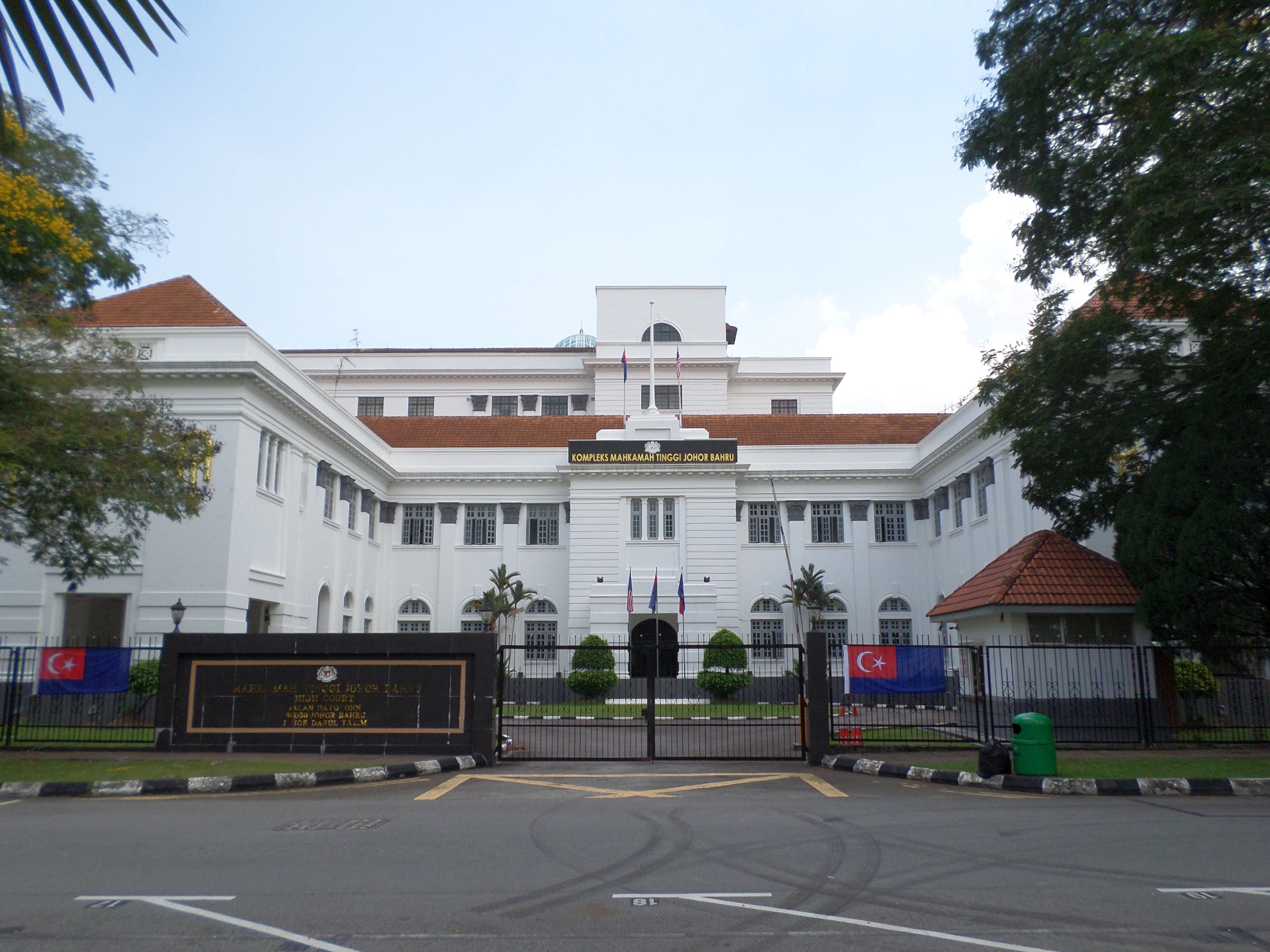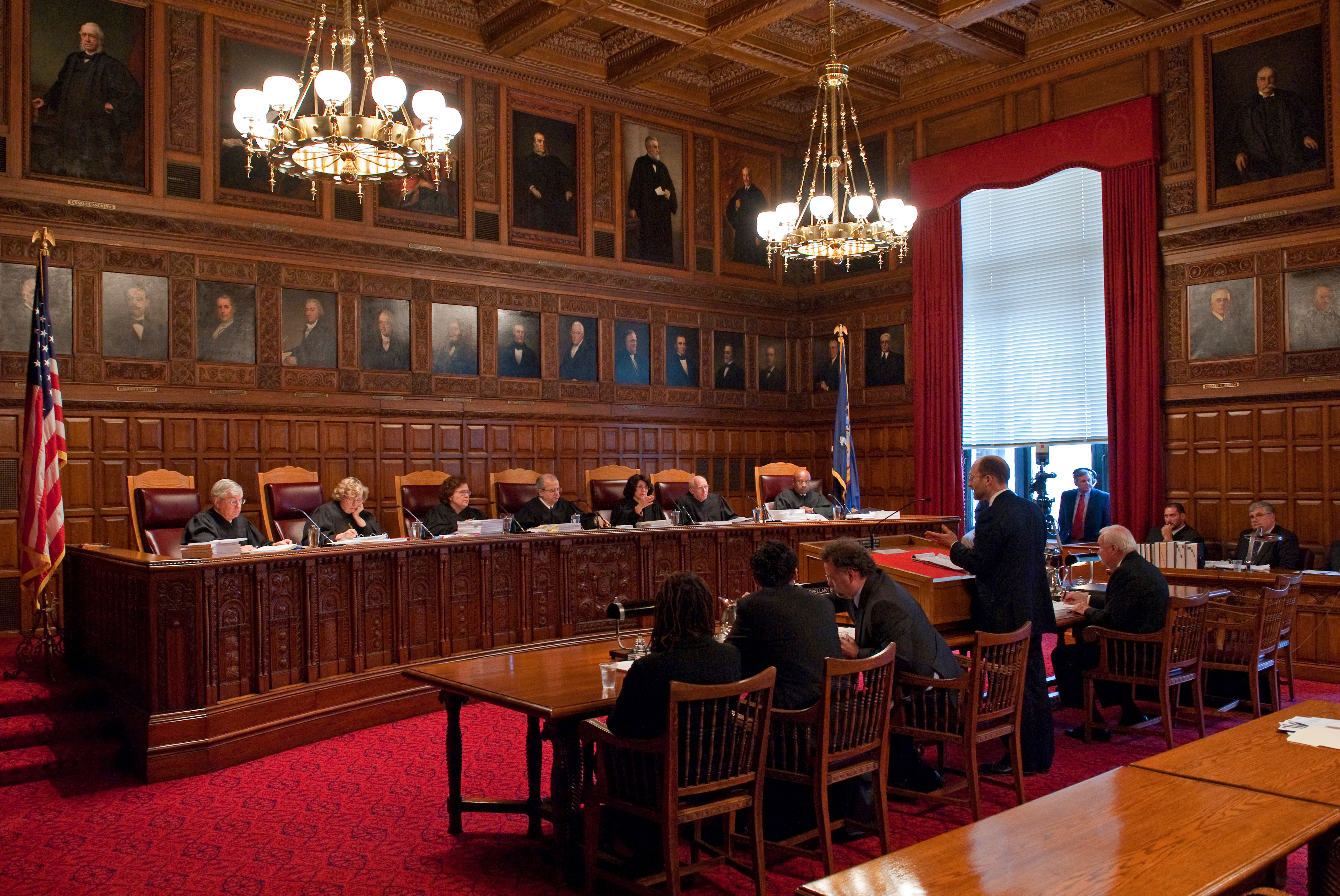|
Mohamed Raus Sharif
Tun Mohamed Raus bin Sharif ( ms, محمد روس بن شريف, label= Jawi, script=arab, italic=unset; born 4 February 1951) is a retired Malaysian lawyer who served as the eighth Chief Justice of Malaysia from 1 April 2017 until 31 July 2018. He replaced Arifin Zakaria. Education He began his formal education at Kampung Astana Raja Primary School in Rembau and went on to complete his secondary education in Tunku Besar Secondary School in Tampin. He completed his STPM certificate in Sekolah Tuanku Abdul Rahman (STAR), Ipoh, Perak. He obtained Bachelor of Laws from University of Malaya in 1976 later obtained Master of Laws from the London School of Economics in 1987. Career He joined Legal and Judicial Services as a magistrate in 1976. On 1 November 1994, he was made a Judicial Commissioner in the High Court at Kuala Lumpur. On 12 January 1996, he was appointed as a Judge at the High Court of Malaya. Since then, he had served Shah Alam High Court, Muar High Court, Pe ... [...More Info...] [...Related Items...] OR: [Wikipedia] [Google] [Baidu] |
Malay Titles
The Malay language has a complex system of styles, titles and honorifics which are used extensively in Brunei, Indonesia, Malaysia, Singapore, and the southern Philippines. Brunei, Malaysia, Singapore and several provinces in Indonesia regularly award honorary and life titles. What follows in this article is specific to the Malaysian system. References to Brunei and Indonesia are given when pertinent. In Malaysia, all non-hereditary titles can be granted to both men and women. Every title has a form which can be used by the wife of the title holder. This form is not used by the husband of a titled woman; such a woman will bear a title which is the same as a titled man. Former use Singapore, whose Malay royalty was abolished by the British colonial government in 1891, has adopted civic titles for its leaders. The Philippines historically used Malay titles during its pre-Hispanic period (especially under Bruneian influence), as evidenced by the titles of historical figur ... [...More Info...] [...Related Items...] OR: [Wikipedia] [Google] [Baidu] |
Sekolah Tuanku Abdul Rahman
Sekolah Tuanku Abdul Rahman ( en, Tuanku Abdul Rahman School; abbreviated STAR) is a premier, all-boys fully residential school in Malaysia funded by the Government of Malaysia. Named after the first Yang di-Pertuan Agong (King) of the Federation of Malaya, Almarhum Seri Paduka Baginda Tuanku Abdul Rahman ibni Almarhum Tuanku Muhammad, it is located in Ipoh, Perak. The school started at an army camp in ''Baeza Avenue'' (now known as Jalan Hospital). Formerly known as Malay Secondary School, the school was built by the Malayan government in 1957. In 2011,the school was awarded with the Sekolah Berprestasi Tinggi or High Performance School title, a title awarded to schools in Malaysia that have met stringent criteria including academic achievement, strength of alumni, international recognition, network and linkages. The beginning In 1950s, a few hundred promising rural children who had completed their Malay primary level education, and their placement in a few selected schools ... [...More Info...] [...Related Items...] OR: [Wikipedia] [Google] [Baidu] |
High Court Of Malaya
The high courts in Malaysia are the third-highest courts in the hierarchy of courts, after the Federal Court and the Court of Appeal. Article 121 of the Constitution of Malaysia provides that there shall be two high courts of co-ordinate jurisdiction—the High Court in Malaya and the High Court in Sabah and Sarawak (before 1994, the High Court in Borneo). Before 1969, the High Court in Singapore was also part of the Malaysian courts system (see Law of Singapore). The High Court in Malaya has its principal registry in Kuala Lumpur, with other registries to be found in all states in Peninsular Malaysia, while the High Court in Sabah and Sarawak has its principal registry in Kuching, with other registries elsewhere in Sabah and Sarawak. There are in total 22 high court registries across all 13 states in Malaysia. The two High Courts also travel on circuit to other smaller towns. The two high courts, the Court of Appeal and the Federal Court are classified as superior courts, whil ... [...More Info...] [...Related Items...] OR: [Wikipedia] [Google] [Baidu] |
Kuala Lumpur
, anthem = '' Maju dan Sejahtera'' , image_map = , map_caption = , pushpin_map = Malaysia#Southeast Asia#Asia , pushpin_map_caption = , coordinates = , subdivision_type = Country , subdivision_name = , subdivision_type1 = Administrative areas , subdivision_name1 = , established_title = Establishment , established_date = 1857 , established_title2 = City status , established_date2 = 1 February 1972 , established_title3 = Transferred to federal jurisdiction , established_date3 = 1 February 1974 , government_type = Federal administrationwith local government , governing_body = Kuala Lumpur City Hall , leader_title = Mayor , leader_name = Mahadi bin Che Ngah , total_type = Federal territory , area_footnotes = , area_total_km2 = 2 ... [...More Info...] [...Related Items...] OR: [Wikipedia] [Google] [Baidu] |
Sijil Tinggi Persekolahan Malaysia
The Malaysian Higher School Certificate ( ms, Sijil Tinggi Persekolahan Malaysia), commonly abbreviated as STPM, is a pre-university examination in Malaysia. It was formerly known as the Higher School Certificate (HSC). Since 1982, STPM has been administered by the Malaysian Examinations Council (MEC), a statutory council under the Ministry of Education. STPM is one of the major pre-university systems for admissions to Malaysian public universities, besides the Malaysian Matriculation Programme and the Malaysian Higher Islamic Religious Certificate (STAM). STPM is internationally recognised by many universities, and the results are considered as equivalent to GCE Advanced Level results. From year 2012 onwards, the modular system has replaced the previous terminal system. The examination series is divided into three semesters and assessed thoroughly, instead of holding one major examination at the end of the examination series in the previous system. Besides that, examination res ... [...More Info...] [...Related Items...] OR: [Wikipedia] [Google] [Baidu] |
Tampin District
The Tampin District is a district in Negeri Sembilan, Malaysia. The district covers and is further divided into four adat socio-political provinces: Tampin town, Air Kuning, Gemencheh and Gemas. Tampin District is surrounded by Tangkak and Segamat Districts, Johor to the southwest, Jasin and Alor Gajah Districts, Malacca to the south, Rembau District to the west, Kuala Pilah District to the northwest and Jempol District to the north. The geographical southern terminus of the Titiwangsa Mountains, the longest mountain range in Malaysia, is located in this district. Administrative divisions Tampin District is divided into 7 mukims, which are:http://apps.water.gov.my/jpskomuniti/dokumen/TAMPIN_PROFIL_JANUARI_2011.pdf * Ayer Kuning * Gemas * Gemencheh Gemencheh (Negeri Sembilan Malay: ''Moncheh'') is a mukim in Tampin District, Negeri Sembilan, Malaysia.http://apps.water.gov.my/jpskomuniti/dokumen/TAMPIN_PROFIL_JANUARI_2011.pdf The Gemencheh Bridge is famous for being g ... [...More Info...] [...Related Items...] OR: [Wikipedia] [Google] [Baidu] |
Chief Justice Of Malaysia
The Chief Justice of Malaysia (Malay: ''Ketua Hakim Negara Malaysia''), also known as the chief justice of the Federal Court, is the office and title of the head of the Malaysian judiciary system. The title has been in use since 1994, and prior to this it was known as the lord president of the Federal Court. The chief justice is the head of the Federal Court, the apex court of Malaysia. It is the highest position in Malaysian judicial system followed by the president of the Court of Appeal of Malaysia, chief judge of Malaya, and the chief judge of Sabah and Sarawak. The current chief justice is Tengku Maimun Tuan Mat, since 2 May 2019. Constitutional basis The office of Chief Justice of the Federal Court is established under Article 122 of the Constitution of Malaysia, which establishes the then-Supreme Court (now Federal Court) as consisting of a lord president (now chief justice), the chief judges of the High Courts and at least four other judges and such additional jud ... [...More Info...] [...Related Items...] OR: [Wikipedia] [Google] [Baidu] |
Lawyer
A lawyer is a person who practices law. The role of a lawyer varies greatly across different legal jurisdictions. A lawyer can be classified as an advocate, attorney, barrister, canon lawyer, civil law notary, counsel, counselor, solicitor, legal executive, or public servant — with each role having different functions and privileges. Working as a lawyer generally involves the practical application of abstract legal theories and knowledge to solve specific problems. Some lawyers also work primarily in advancing the interests of the law and legal profession. Terminology Different legal jurisdictions have different requirements in the determination of who is recognized as being a lawyer. As a result, the meaning of the term "lawyer" may vary from place to place. Some jurisdictions have two types of lawyers, barrister and solicitors, while others fuse the two. A barrister (also known as an advocate or counselor in some jurisdictions) is a lawyer who typically specia ... [...More Info...] [...Related Items...] OR: [Wikipedia] [Google] [Baidu] |
Jawi Alphabet
Jawi (; ace, Jawoë; Kelantan-Pattani: ''Yawi''; ) is a writing system used for writing several languages of Southeast Asia, such as Acehnese, Banjarese, Kerinci, Maguindanaon, Malay, Minangkabau, Tausūg, and Ternate. Jawi is based on the Arabic script, consisting of all of the original 31 Arabic letters, and six additional letters constructed to fit the phonemes native to Malay, and an additional phoneme used in foreign loanwords, but not found in Classical Arabic, which are ''ca'' ( ), ''nga'' ( ), ''pa'' ( ), ''ga'' ( ), ''va'' ( ), and ''nya'' ( ). Jawi was developed from the advent of Islam in the Maritime Southeast Asia, supplanting the earlier Brahmic scripts used during Hindu-Buddhist era. The oldest evidence of Jawi writing can be found on the 14th century Terengganu Inscription Stone, recorded in Classical Malay language that contains a mixture of Malay, Sanskrit and Arabic vocabularies. There are two competing theories on the origin of the Jawi alphabet. ... [...More Info...] [...Related Items...] OR: [Wikipedia] [Google] [Baidu] |
Malaysian People
Malaysians are nationals and citizens who are identified with the country of Malaysia. Although citizens make up the majority of Malaysians, non-citizen residents and overseas Malaysians may also claim a Malaysian identity. The country is home to people of various national, ethnic and religious origins. As a result, many Malaysians do not equate their nationality with ethnicity, but with citizenship and allegiance to Malaysia. Majority of the population, however, belong to several clearly defined racial groups within the country with their own distinct cultures and traditions: Malays, Orang Asli (aboriginal population), Malaysian Chinese (primarily Han Chinese), Malaysian Indians (primarily Tamils). The majority of the non-Malay and non-aboriginal population in modern Malaysia is made up of immigrants and their descendants. Following the initial period of Portuguese, Dutch and then significantly longer British colonisation, different waves (or peaks) of immigration and set ... [...More Info...] [...Related Items...] OR: [Wikipedia] [Google] [Baidu] |
Master Of Laws
A Master of Laws (M.L. or LL.M.; Latin: ' or ') is an advanced postgraduate academic degree, pursued by those either holding an undergraduate academic law degree, a professional law degree, or an undergraduate degree in a related subject. In most jurisdictions, the "Master of Laws" is the advanced professional degree for those usually already admitted into legal practice. Background on legal education in common law countries To become a lawyer and practice law in most states and countries, a person must first obtain a law degree. While in most common law countries a Bachelor of Laws (LL.B.) is required, the U.S. generally require a professional doctorate, or Juris Doctor, to practice law. The Juris Doctor (J.D.) is a professional doctorate Under "Data notes" this article mentions that the J.D. is a professional doctorate.. Under "other references" differences between academic and professional doctorates, and contains a statement that the J.D. is a professional doctorate Report ... [...More Info...] [...Related Items...] OR: [Wikipedia] [Google] [Baidu] |




